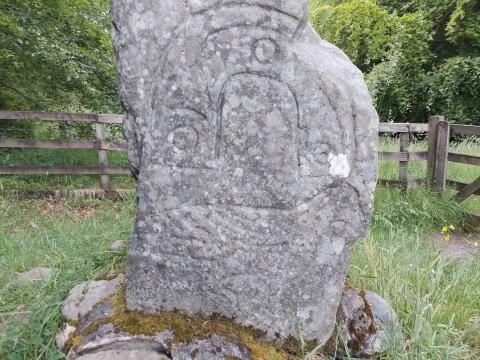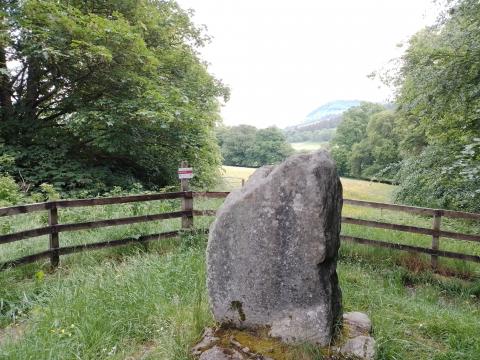Eagle Stone, Noah's Flood

The Eagle Stone at Strathpeffer in the Scots Highlands is an impressive piece of seventh century Pictish art. It shows a large, detailed bird usually described as an eagle underneath an arch, often called a horseshoe. No-one really knows anything about it, though it may have been relocated by the Munro Clan in the early 1400s to mark a site of victory in the internecine clan feuds for which Scotland was infamous.
Those of us with a high view of scripture believe the Picts to have been aware of the worldwide flood that occurred at the time of Noah. They, his descendants from his son Japheth, would have transmitted an oral tradition of the great Flood, which the Hebrews and countless other peoples also recalled. Part of the story includes two birds, one of which returns with a twig, and a rainbow, the Creator’s great token of grace that He would not again flood the entire earth. Interestingly, there is a sixteenth or seventeenth-century association of the stone with a flood of the valley in which it stands.
Linking Pictish art to Biblical accounts will appear ridiculous to those who think that the latter only describes ancient, local myths rather than worldwide, cosmic realities; to those who believe the Flood was a real, global and cataclysmic event, we would be surprised not to locate its symbols and evidence of its re-telling in far flung places. If the stone refers to Noah's raven sitting beneath God's rainbow, this would be an early depiction of the Creator's righteous judgement as well as His gracious clemency.

- Log in to post comments


 Sunday Worship 10.45am & 6.00pm
Sunday Worship 10.45am & 6.00pm